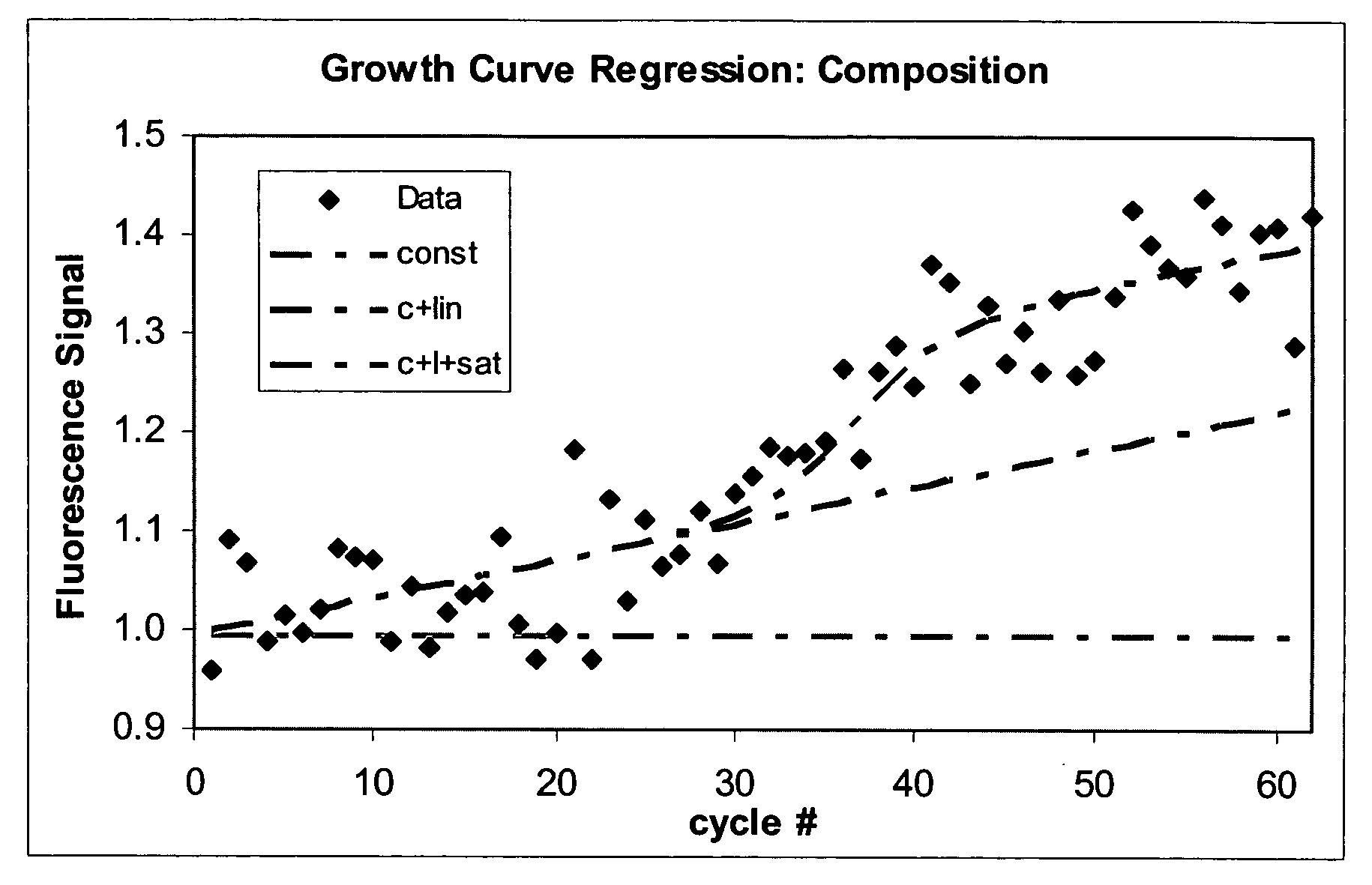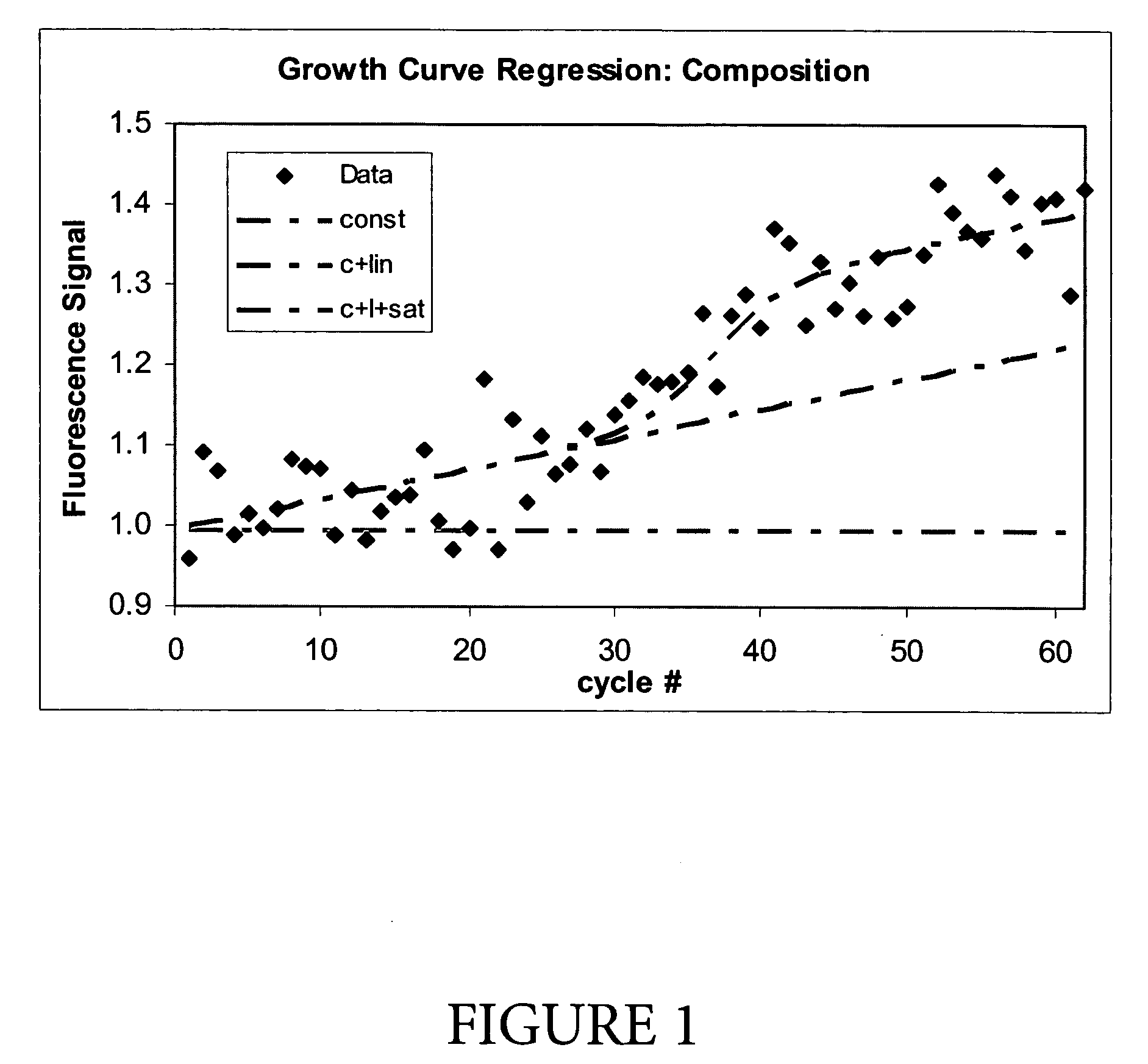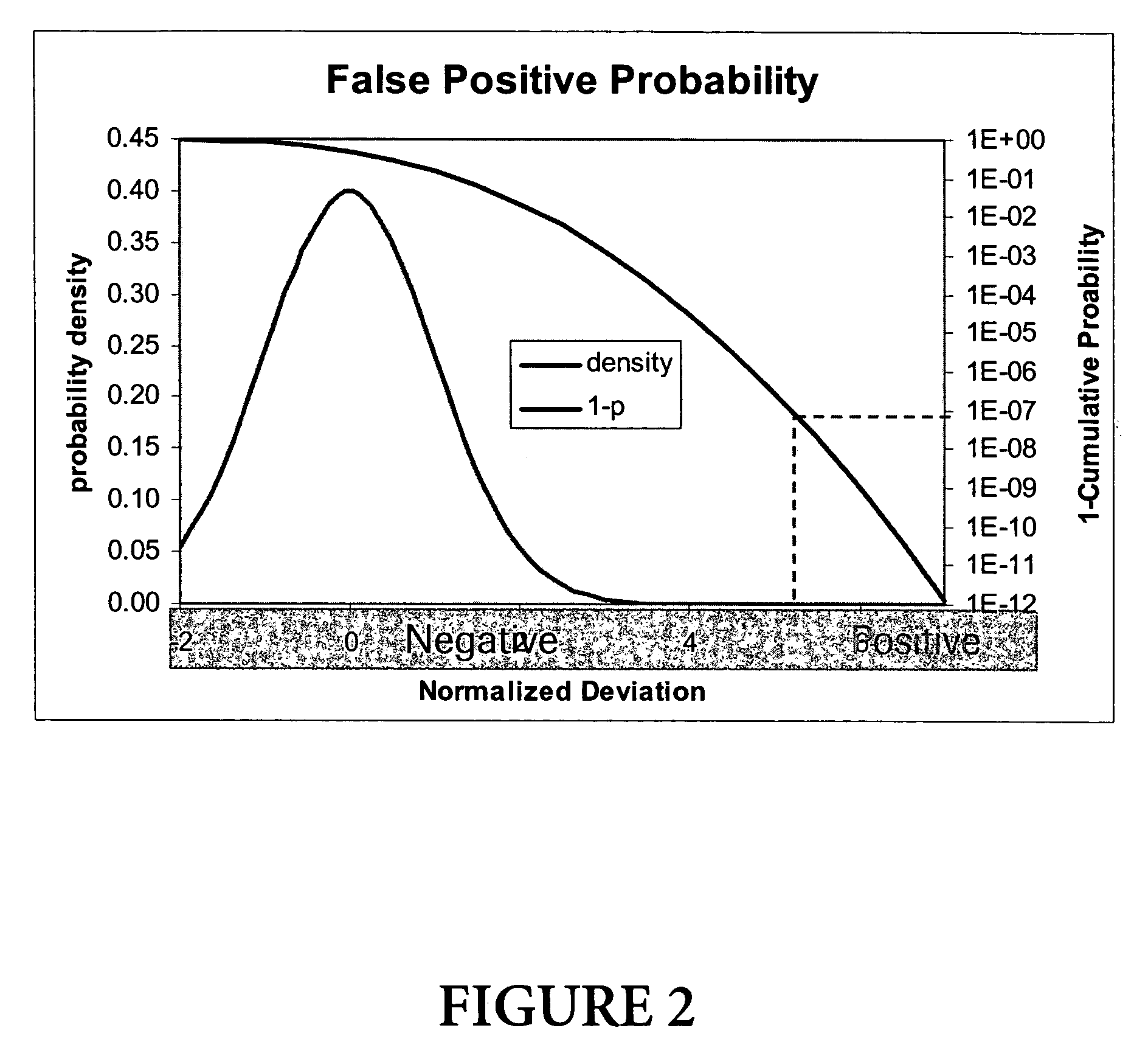Qualitative analysis of a sample using an algorithm
a sample and algorithm technology, applied in the field of qualitative analysis of samples using algorithms, can solve the problem that reaction results require special data analysis, and achieve the effect of convenient execution and more reliabl
- Summary
- Abstract
- Description
- Claims
- Application Information
AI Technical Summary
Benefits of technology
Problems solved by technology
Method used
Image
Examples
Embodiment Construction
[0026] From the inverse Student t-distribution function a statistical false positive (statistical type I error) probability p can be calculated. The statistical type I error p means that the hypothesis is rejected by the methode even it is true in reality. Other common statistical significance criteria (adjusted R2, SIC) lead to similar results. The most significant regression with varying inflection point is chosen based on the smallest t-value of each regression with varying inflection point e for the final result as shown in FIG. 1.
[0027] In FIG. 2 a t-test diagram is shown, where line 1 shows the density function of the Student t-distribution. This curve shows the t distribution as function of t in case of negative curves (average(t)=0). The area below that curve represents the probability of a negative showing a special t value or smaller. Line 2 displays the probability p of t being greater than a certain t value (in a logarithmic scale). It is calculated as 100%-cumulative p...
PUM
| Property | Measurement | Unit |
|---|---|---|
| sigmoid shape | aaaaa | aaaaa |
| fluorescent | aaaaa | aaaaa |
| fluorescence | aaaaa | aaaaa |
Abstract
Description
Claims
Application Information
 Login to View More
Login to View More - R&D
- Intellectual Property
- Life Sciences
- Materials
- Tech Scout
- Unparalleled Data Quality
- Higher Quality Content
- 60% Fewer Hallucinations
Browse by: Latest US Patents, China's latest patents, Technical Efficacy Thesaurus, Application Domain, Technology Topic, Popular Technical Reports.
© 2025 PatSnap. All rights reserved.Legal|Privacy policy|Modern Slavery Act Transparency Statement|Sitemap|About US| Contact US: help@patsnap.com



